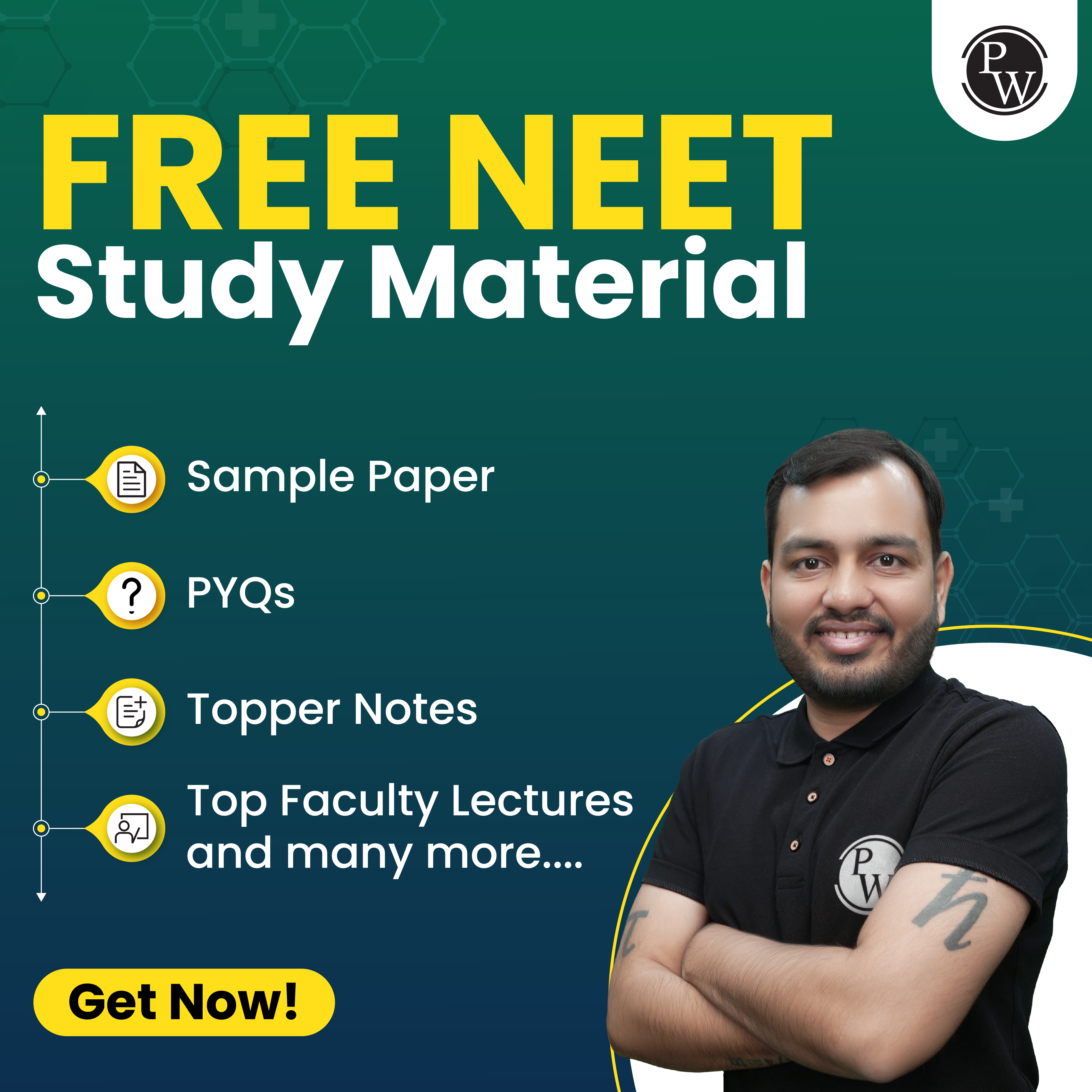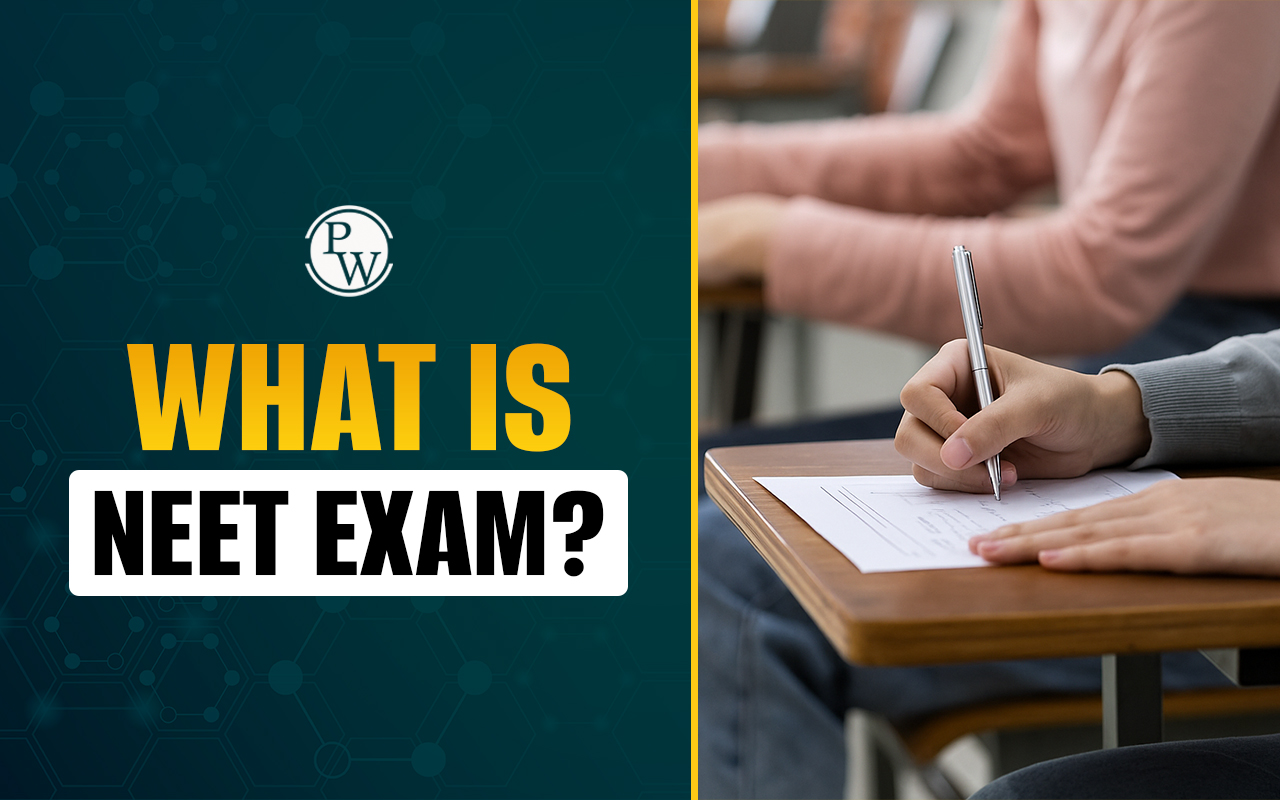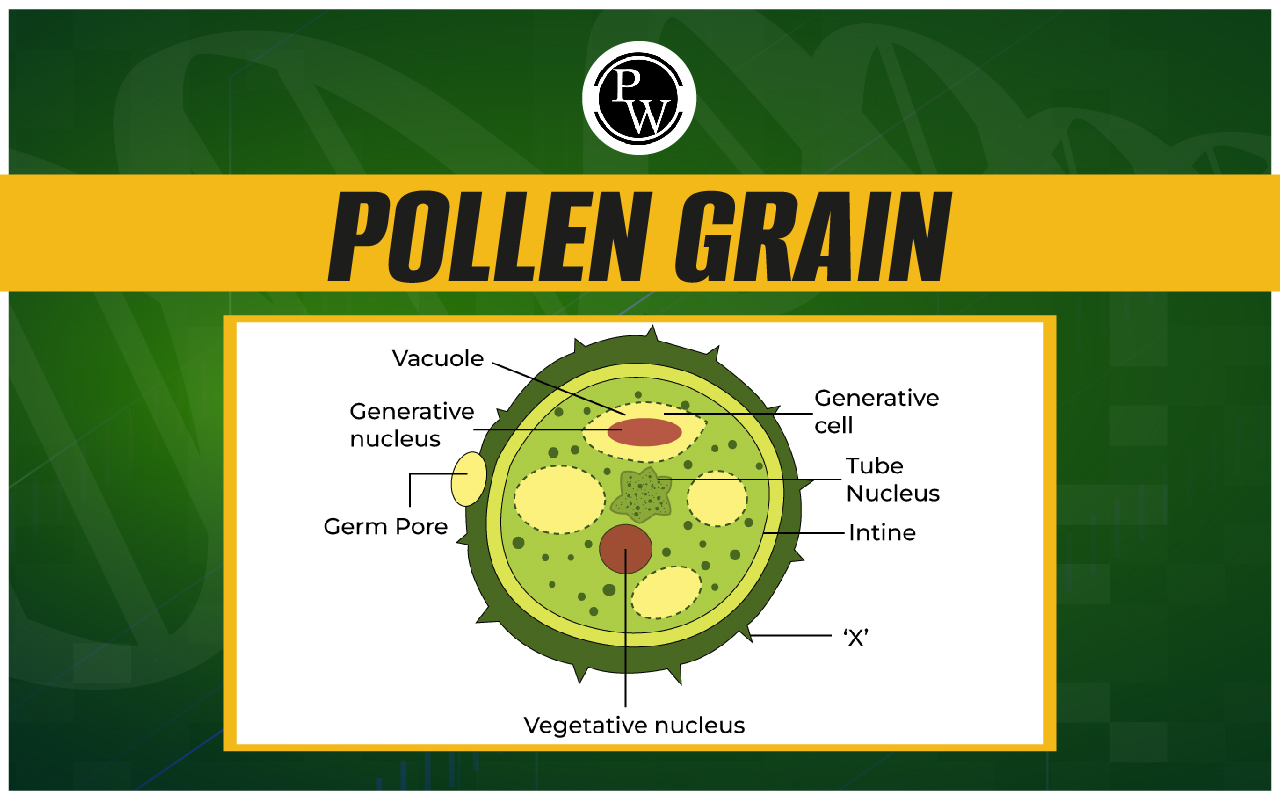
Thermodynamics MCQs: Thermodynamics MCQs are essential for mastering the concepts of energy transformations and chemical reactions, which are pivotal in both NEET and Class 11 Chemistry. These MCQs not only help in understanding key thermodynamic concepts such as enthalpy, laws of thermodynamics, and Gibbs energy but also enhance problem-solving skills by applying theoretical knowledge to practical scenarios.
Regular practice with Thermodynamics MCQs ensures familiarity with the exam format, boosts confidence, and improves overall performance, making them an essential component of effective NEET exam preparation. Students can refer to the Thermodynamics MCQs provided below to enhance their preparation.Thermodynamics MCQs Chemistry For NEET
Thermodynamics MCQs Chemistry for NEET plays an important role in the NEET Chemistry syllabus because of its significant weightage in the exam. Practicing these multiple-choice questions (MCQs) helps students concentrate on key thermodynamics concepts that are frequently tested in NEET. By regularly solving these MCQs, students can better understand important principles, improve their accuracy, and manage their time more effectively during the exam. This focused practice not only strengthens their knowledge but also leads to better exam performance and a more thorough preparation strategy.Thermodynamics MCQs Class 11
Thermodynamics MCQs for Class 11 are important for building a solid foundation in Chemistry. These questions help students grasp essential concepts that are important for more advanced topics in future studies. By practicing Thermodynamics MCQs, students can strengthen their understanding of fundamental principles and enhance their problem-solving skills. This preparation not only helps students perform well in their Class 11 exams but also provides a strong base for tackling competitive exams like NEET, where Thermodynamics holds significant importance due to its high weightage in the NEET chemistry chapter-wise weightage .Also Check:
Thermodynamics MCQs with Answers
Thermodynamics MCQs with Answers provide quick feedback for all attempted NEET MCQs, which is very helpful for learning and review. These questions enable students to spot and correct mistakes immediately, strengthening their grasp of essential concepts like enthalpy, entropy, and other important topics. Reviewing the answers helps deepen understanding and improve problem-solving skills. Incorporating MCQs with answers into study routines enhances preparation, builds confidence, and leads to better performance on exams.
Q 1. What is thermodynamics?
(1) Study of the relationship between heat and other forms of energy. (2) Study of the conversion of chemical energy to other forms of energy. (3) Study of the relationship between mechanical energy to other forms of energy. (4) Study of the conversion of mechanical energy to other forms of energy.Ans. 1
Q 2. Which of the following is/are the application(s) of thermodynamics?
(1) To predict the feasibility of a reaction. (2) To determine the extent of a reaction. (3) To determine the kinetics of a reaction. (4) All of theseAns. 1
Q 3. Statement I: The system is a part of the universe.
Statement II: The system is a part of the surroundings.
(1) Statement I and Statement II both are correct. (2) Statement I is correct but Statement II is incorrect. (3) Statement I is incorrect but Statement II is correct. (4) Statement I and Statement-II both are incorrect.Ans. 2
Q 4. A system is said to be heterogeneous when it;
(1) is completely uniform throughout. (2) consists of one phase only. (3) is not uniform throughout. (4) has a uniform composition throughout.Ans. 3
Q 5. A well-stoppered thermos flask contains some ice cubes. This is an example of;
(1) closed system. (2) open system. (3) isolated system. (4) non-thermodynamic system.Ans. 3
Q 6. A system that cannot exchange both energy and matter with the surroundings is called;
(1) open system. (2) closed system. (3) isolated system. (4) None of theseAns. 3
Q 7. Which of the following is an example of a homogeneous system?
(1) colloidal solution (2) alloy (3) suspensions (4) None of theseAns. 2
Q 8. An isolated system is a system in which;
(1) there is no exchange of energy with the surroundings. (2) there is an exchange of mass and energy with the surroundings. (3) there is no exchange of energy and mass with the surroundings. (4) there is an exchange of mass with the surroundings.Ans. 3
Q 9. The human body is an example of;
(1) closed system (2) open system (3) isolated system (4) None of theseAns. 2
Q 10. If a closed system has adiabatic boundaries, then at least one boundary must be;
(1) permeable (2) imaginary (3) movable (4) fixedAns. 3
Q 11. A system that can exchange only energy but cannot exchange matter with the surroundings is known as;
(1) open system (2) isolated system (3) closed system (4) None of theseAns. 3
Q 12. Which of the following is a type of thermodynamic system?
(1) Open system (2) Closed system (3) Isolated system (4) All of theseAns. 4
Q 13. Adiabatic boundaries are;
(1) conducting (2) non-conducting (3) flexible (4) None of theseAns. 2
Q 14. In thermodynamics, a quantity whose value simply depends upon the initial and final state of the system is called;
(1) thermodynamic quantity (2) state function (3) adiabatic quantity (4) path functionAns. 2
Q 15. A thermodynamic state function is;
(1) a quantity whose value depends only on the path of the system. (2) a quantity that is used in measuring thermal changes. (3) one which is used in thermochemistry. (4) a quantity whose value depends only on the state of the system.Ans. 4
Q 16. Changes in a system from an initial state to the final state were made in a different manner than ΔH remains the same but q changes because;
(1) ΔH is a path function and q is a state function. (2) ΔH is a state function and q is a path function. (3) both ΔH and q are state functions. (4) both ΔH and q are path functions.Ans. 2
Q 17. Which of the following is not a state function?
(1) ΔS (2) ΔG (3) ΔH (4) qAns. 4
Q 18. Which of the following is not a state function?
(1) Internal energy (2) Free energy (3) Work (4) EnthalpyAns. 3
Q 19. In a change from state A to state B;
(1) q depends only on the initial and final state. (2) w depends only on the initial and final state. (3) ΔU depends only on the initial and final state. (4) ΔU depends upon the path adopted by A to change into B.Ans. 3
Q 20. Which of the following are not state functions?
(i) (q + w)
(ii) q
(iii) w
(iv) H-TS
(1) (i) and (iv) (2) (ii) and (iii) (3) (i), (ii) and (iii) (4) (i), (ii), and (iv)Ans. 2
Q 21. Which one of the following statements is false?
(1) Work is a state function. (2) Temperature is a state function. (3) Change in the value of the state function is completely defined when the initial and final states are specified. (4) None of theseAns. 1
Q 22. Assertion (A): The sum of q + w is a state function.
Reason (R): Work and heat are state functions.
(1) Both Assertion (A) and Reason (R) are true and Reason (R) is the correct explanation of Assertion (A). (2) Both Assertion (A) and Reason (R) are true but Reason (R) is not the correct explanation of Assertion (A). (3) Assertion (A) is true and Reason (R) is false. (4) Assertion (A) is false and Reason (R) is true.Ans. 3
Q 23. Enthalpy is a;
(1) State function (2) Path function (3) Both (1) and (2) (4) None of theseAns. 1
Q 24. Assertion (A): ΔU is a state function.
Reason (R): ΔU depends only on the initial and final state.
(1) Both Assertion (A) and Reason (R) are true and Reason (R) is the correct explanation of Assertion (A). (2) Both Assertion (A) and Reason (R) are true but Reason (R) is not the correct explanation of Assertion (A). (3) Assertion (A) is true and Reason (R) is false. (4) Assertion (A) is false and Reason (R) is true.Ans. 1
Q 25. Heat and work are;
(1) point functions (2) system properties (3) path functions (4) state functionsAns. 3
Q 26. Which of the following sets contains only extensive properties?
(1) Mole, volume, pressure (2) H, U, V (3) T, P, V (4) Density, entropy, heat capacityAns. 2
Q 27. Which of the following is an intensive property?
(1) Temperature (2) Viscosity (3) Density (4) All of theseAns. 4
Q 28. Out of;
(i) boiling point
(ii) entropy
(iii) pH
(iv) emf of a cell intensive properties are;
(1) (i), (ii) (2) (i), (ii), (iii) (3) (i), (iii), (iv) (4) All of theseAns. 3
Q 29. Which among the following state functions is an extensive property of the system?
(1) Temperature (2) Volume (3) Refractive index (4) ViscosityAns. 2
Q 30. Among the following, an intensive property is;
(1) mass (2) Volume (3) surface tension (4) enthalpyAns. 3
Q 31. Which of the following is an intensive property?
(1) Volume (2) Mass (3) Density (4) EnergyAns. 3
Q 32. Incorrect statement is/are;
(i) Density is an intensive property.
(ii) Heat capacity is an intensive property.
(iii) Internal energy is an extensive property.
(iv) Temperature is an extensive property.
(1) (i) and (ii) (2) (ii), (iii) and (iv) (3) Only (iii) (4) (ii) and (iv)Ans. 4
Q 33. Statement-I: The ratio of two extensive properties is also an extensive property.
Statement II: Extensive properties are independent of the magnitude of mass.
(1) Statement-I and Statement-II both are correct. (2) Statement I is correct but Statement II is incorrect. (3) Statement I is incorrect but Statement II is correct. (4) Statement-I and Statement-II both are incorrect.Ans. 4
Q 34. A cup of tea placed in the room eventually acquires room temperature by losing heat. The process may be considered close to;
(1) cyclic process. (2) reversible process. (3) isothermal process. (4) None of theseAns. 2
Q 35. The temperature of the system remains constant in an;
(1) adiabatic process. (2) isothermal process. (3) isochoric process. (4) isobaric process.Ans. 2
Q 36. Which of the following is true for an adiabatic process?
(1) ΔH = 0 (2) W = 0 (3) q = 0 (4) ΔV = 0Ans. 3
Q 37. Assertion (A): An adiabatic process is a process in which the system does not exchange energy with its surroundings.
Reason (R): It does not involve any change in the temperature of the system.
(1) Both Assertion (A) and Reason (R) are true and Reason (R) is the correct explanation of Assertion (A). (2) Both Assertion (A) and Reason (R) are true but Reason (R) is not the correct explanation of Assertion (A). (3) Assertion (A) is true and Reason (R) is false. (4) Assertion (A) is false and Reason (R) is true.Ans. 3
Q 38. Which of the following conditions is necessary for a process to be reversible?
(1) The process must occur in an isolated system. (2) The process must involve a change in temperature. (3) The process must occur slowly and without friction. (4) The process must lead to a decrease in temperature.Ans. 3
Q 39. An irreversible process is characterized by;
(1) the system returns to its initial state after completion of the process. (2) a continuous decrease in the temperature of the system. (3) the inability to completely restore both the system and its surroundings to their initial states. (4) the absence of any heat transfer during the process.Ans. 3
Q 40. In which of the following processes, does the pressure of an ideal gas remain constant?
(1) Isothermal expansion (2) Isobaric compression (3) Adiabatic expansion (4) Isochoric heatingAns. 2
Q 41. Which of the following conditions must be satisfied for a system to be in thermal equilibrium?
(1) The system must be isolated from its surroundings. (2) The system must be at a constant temperature. (3) The system must be at a constant pressure. (4) The system must be at a constant energy state.Ans. 2
Q 42. A system is in thermodynamic equilibrium if it is in;
(1) only thermal equilibrium. (2) chemical, mechanical, and thermal equilibrium. (3) only chemical equilibrium. (4) only mechanical equilibrium.Ans. 2
Q 43. Which of the following statements regarding latent heat is correct?
(1) Latent heat depends on the mass of the substance. (2) Latent heat is released during a phase change. (3) Latent heat is measured in units of temperature. (4) Latent heat is the heat required to change the temperature of a substance without changing its phase.Ans. 2
Q 44. Which of the following statements is true regarding latent heat of fusion and latent heat of vaporization?
(1) The latent heat of fusion is always greater than the latent heat of vaporization. (2) Both latent heaters are specific properties of a substance. (3) The latent heat of fusion depends on pressure, while the latent heat of vaporization does not. (4) The latent heat of vaporization is the heat required to convert a gas into a liquid.Ans. 2
Q 45. Which of the following statements regarding heat is correct?
(1) It is path independent quantity. (2) It is a path-dependent quantity. (3) Heat absorbed by the system is negative, i.e., q < 0. (4) Heat given out by the system is positive, i.e., q > 0.Ans. 2
Q 46. A gas is allowed to expand in a well-insulated container against a constant internal pressure of 2 atm from an initial volume of 2.50 L to a final volume of 4.50 L. The change in internal energy ΔU of the gas in joules will be;
(1) +404 J (2) 1136.25 J (3) –500 J (4) –404 JAns. 4
Q 47. A thermally isolated gaseous system can exchange energy with the surroundings. The mode of transference of energy can be;
(1) heat. (2) work. (3) heat and radiation. (4) only radiations.Ans. 2
Q 48. The volume of a gas decreases from 500 cc to 300 cc when a sample of gas is compressed by an average pressure of 0.6 atm. During this process, 10 J of heat is liberated. The change in internal energy is;
(1) –2.16 J (2) 12.156 J (3) 2.16 J (4) 101.3 JAns. 3
Q 49. A system absorbs 600 J of heat and works equivalent to 300 J on its surroundings. The change in internal energy is;
(1) 300 J (2) 400 J (3) 500 J (4) 600 JAns. 1
Q 50. During an isochoric process, 400 J of heat is added to a system. How much work is done by the system?
(1) 0 J (2) 400 J (3) –400 J (4) Cannot be determinedAns. 1
Q 51. Under the isothermal conditions, a gas at 300 K expands from 0.1 L to 0.25 L against a constant external pressure of 2 bar. The work done by the gas is; (Given that 1 L bar = 100 J)
(1) –30 J (2) 5 kJ (3) 25 J (4) 30 JAns. 1
Q 52. The work is done when two moles of an ideal gas are compressed from a volume of 5 m3 to 1 dm3 at 300 K, under a pressure of 100 kPa;
(1) 499.9 kJ (2) –499.9 kJ (3) –99.5 kJ (4) 424.95 kJAns. 1
Q 53. A gas expands from 3.0 L to 3.5 L against an external pressure of 1 atm. Calculate the PV work done.
(1) –0.5 L atm (2) –1 L atm (3) –100 J (4) –200 JAns. 1
Q 54. If the internal energy of a system increases by 800 J and it releases 300 J of heat to its surroundings, how much work is done by the system?
(1) 500 J (2) 1100 J (3) 300 J (4) –1100 JAns. 4
Q 55. A system undergoes a process in which it absorbs 300 J of heat and does 500 J of work. What is the change in the internal energy of the system?
(1) –200 J (2) 800 J (3) 200 J (4) –800 JAns. 1
Q 56. Under the isothermal conditions, a gas at 600 K expands from 0.1 L to 0.25 L against a constant external pressure of 4 bar. The work done by the gas is; (Given that I L bar = 100 J)
(1) –60 J (2) 5 kJ (3) 25 J (4) 60 JAns. 1
Q 57. A gas expands isothermally against a constant external pressure of 1 atm from a volume of 10 dm3 to a volume of 20 dm3. It absorbs 800 J of thermal energy from its surroundings. The ΔU is;
(1) –312 J (2) +123 J (3) –213 J (4) +231 JAns. 3
Q 58. If 400 kJ of work is done by the system and 150 kJ of heat is given to the system then, what will be the effect on internal energy?
(1) Increases by 250 kJ (2) Decreases by 250 kJ (3) Increases by 600 kJ (4) Increases by 600 kJAns. 2
How to Solve Thermodynamics MCQs For NEET?
To effectively tackle thermodynamics MCQs for NEET, keep these essential strategies in mind:- Understand Key Concepts : Grasp fundamental thermodynamics principles, such as the laws of thermodynamics, heat transfer, and entropy.
- Familiarize with Formulas : Know important formulas and equations, like the first and second laws of thermodynamics, and how to apply them.
- Analyze the Question Carefully : Read each question thoroughly to identify what is being asked and which thermodynamic principles apply.
- Use Process of Elimination : Eliminate obviously incorrect options to increase your chances of selecting the correct answer.
- Practice Sample Problems : Solve various practice questions to become familiar with different types of thermodynamics problems.
- Check Units and Calculations : Ensure that units are consistent and calculations are accurate to avoid errors in solving problems.
Thermodynamics MCQs FAQs
Q. What is the focus of Thermodynamics MCQs Chemistry For NEET?
Q. Where can I find Thermodynamics MCQs Class 11 questions and answers?
Q. How can I access Thermodynamics MCQs with Answers?
Q. What strategies should I use to solve Thermodynamics MCQs For NEET?
Q. How does Thermodynamics MCQs Class 11 help in NEET preparation?










